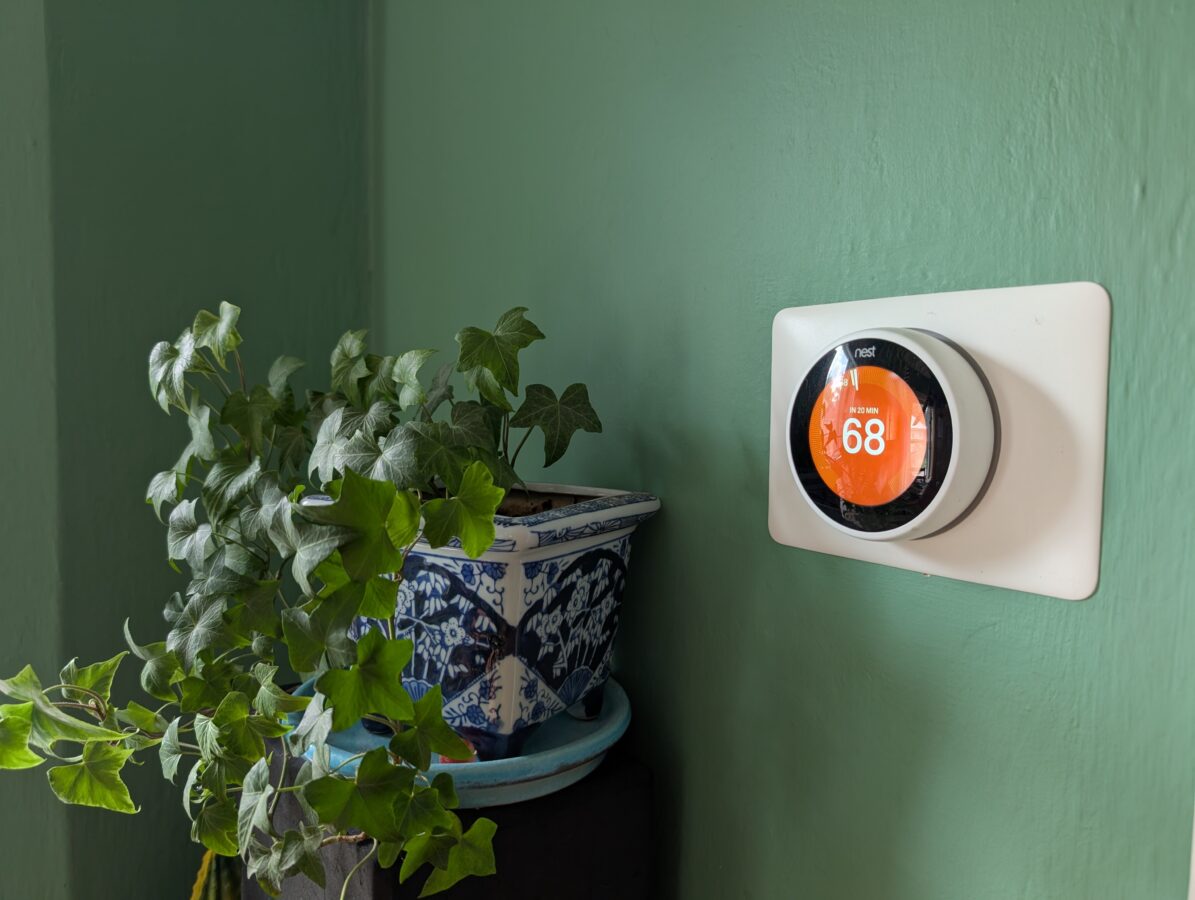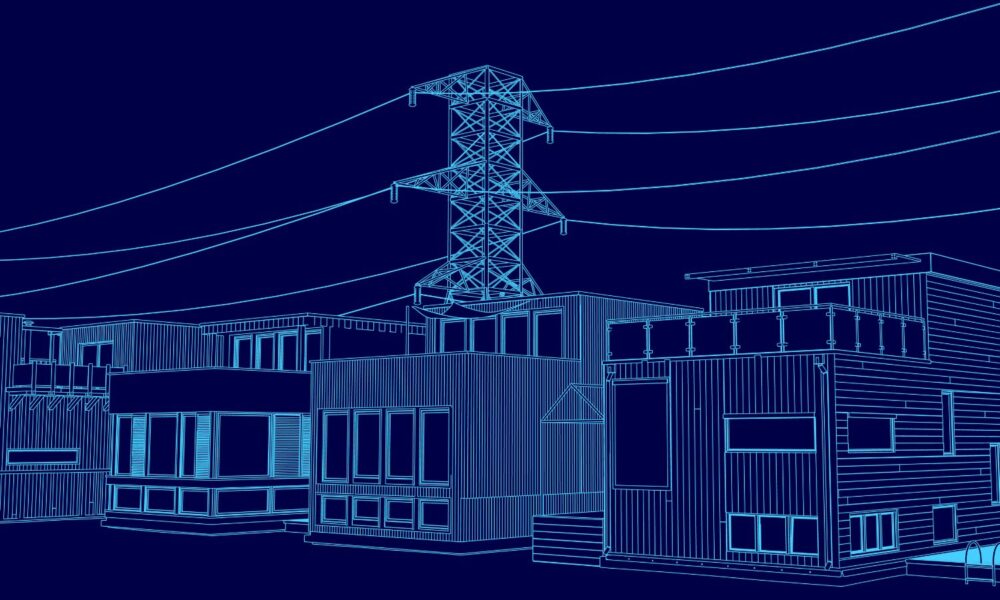In the first post in this series, we started with the example of a single home with a solar + storage system. We classified this as a distributed energy resource (DER) and defined the context in which it fits—a historically centralized grid that is rapidly changing.
In the second post, we talked about how multiple DERs and loads in a single location can work together to create a microgrid—literally a miniature version of the grid—to provide resilience benefits in addition to the economic, health, and other benefits of DERs.
But DERs don’t have to be physically connected together in order to coordinate. A key part of the grid’s evolution is the ability of DERs to coordinate across homes and buildings. When done carefully, this coordination can function like a traditional power plant, taking the name of a virtual power plant, or VPP. In this post, we’ll explore how VPPs work and the powerful role they can play in transforming our grid.
I can’t believe it’s not a real power plant!
The US Department of Energy (DOE) provides the following definition of virtual power plants:
VPPs are aggregations of distributed energy resources (DERs) such as smart appliances, rooftop solar with batteries, EVs and chargers, and commercial and industrial loads that can balance electricity demand and supply and provide grid services like a traditional power plant.
The main function of traditional power plants is to provide energy to the grid that is precisely balanced, moment by moment, with the demand, or the need for energy. Essentially, every time you turn on a light, a power plant elsewhere on the grid produces a little extra energy to meet that demand. While this has traditionally been supplied by centralized power plants, it can also be supplied by DERs scattered around the grid.

A VPP is a collection of DERs that can be controlled just like a centralized power plant. The concept grew out of demand response programs (where customers allow utilities to reduce demand with things like smart thermostats), but expanded to include DERs which can send energy back to the grid. The aggregation is typically done by utilities or third-party aggregators that sign up customers with DERs to participate in the VPP. Then, in exchange for allowing the utility or aggregator to control their DER, customers are typically paid an incentive (in addition to reaping the base benefits provided by the DER).
Power plants provide more than just power
While providing electric energy to end users is the main function of the grid, there’s a lot of coordination required to make this happen: the frequency must be tightly controlled, voltage must be kept within strict limits, and reserves of generating capacity must be kept online at all times to protect against the risk of outages. These requirements are provided by what are called ancillary services, or grid services (the latter term often including energy and capacity as well).
Most ancillary services can be provided by traditional power plants, but some must be provided at multiple points throughout the grid. This is a task for which DERs are well-suited, as they are distributed through the grid by definition. Alone, DERs are great for providing localized energy needs to customers. When coordinated as part of a VPP, they can also provide the grid services needed to keep the grid stable and reliable.
Thinking back to the farming metaphor we used to understand DERs, a VPP is like a farmers market—a group of small producers coming together on occasion to help out with a community’s overall need. Instead of one big corporate farm trying to meet all the needs of every customer, many smaller farms working together can accomplish the same goal with more local input and adaptability, producing better quality goods and bringing benefits to more participants. In the same way, VPPs are better tailored to meet more of the local needs of the grid, while allowing more people to participate and benefit from the system.
The real promise of virtual power
As the name implies, a VPP can supply many of the same services as a traditional power plant, with the added bonus of flexibility, adaptability, and community-focused design. Extreme weather, on top of rising demand, makes for increasing grid failures that leave many people vulnerable to extended outages. Unlike fossil fuel plants, VPPs are able to operate under these variable conditions because they are distributed throughout the grid and can quickly adapt to changing needs.
Other key benefits of VPPs come from the fact that they’re built on top of existing infrastructure. On the market side, this means that grid operators can (virtually) assemble a power plant without needing to build all the infrastructure, reducing cost and time to deployment. For the DER owners, VPPs create a new opportunity for them to utilize their existing assets, providing additional benefits from their system. And of course, VPPs bring along all the benefits of the DERs from which they’re assembled: local resilience, economic benefits for owners, reduced emissions, and others.
Targeted deployment of VPPs (or targeted enrollment of existing DERs) can be used to eliminate, reduce, or defer the need to build other costly infrastructure. This approach is referred to as non-wires solutions or non-wires alternatives. In Southern California, for example, an 85 megawatt VPP has been in operation since late 2016 providing generation for an area with capacity constraints after a nuclear power plant was decommissioned.
Overall, the DOE estimates that VPPs could reach up to 160 gigawatts of capacity by 2030, enough to offset 20% of the nation’s total peak demand with affordable, clean energy that drives investments and benefits into communities.
Virtual Power Plants in action
As of 2024, VPPs accounted for over 30 gigawatts of peak capacity in the US—a big number, but just a fraction of the 800 gigawatts of peak demand. To scale that fraction up, several examples show the way.
In Vermont, the utility Green Mountain Power offers a Bring Your Own Device program, which offers customers rebates up to $10,500 to purchase batteries and have them programmed to participate in a VPP. In Puerto Rico, a VPP run by solar and battery company Sunnova has enrolled over 1,000 customers and helped prevent numerous outages.
A brief report from RMI’s Virtual Power Plant Partnership provides details of a dozen other VPPs in action contributing to objectives such as lowering peak demand, maintaining affordability, reducing pollution, and providing resilience for homes and communities. Overall, the report estimates that up to 500 VPPs are currently operating in the US.
Barriers to virtual power
Despite these proven successes, a number of barriers still stand in the way of further VPP deployment. In 2025, the DOE published Pathways to Commercial Liftoff: Virtual Power Plants, an update to the 2023 report highlighting the potential and challenges for VPPs. The report highlights five key challenges to broader deployment of VPPs:
- Low DER adoption. VPPs are built on top of DERs, and while there’s been rapid growth in DERs, DOE estimates that less than 15% of households in the United States have any form of DER.
- VPP enrollment and participation can be complicated. The concept of VPPs can be complicated, and poor messaging with strict requirements can make potential participants wary to join or prone to quit.
- No industry standardization. As a nascent industry, VPP vendors have been building their solutions from the ground up, then working on a case-by-case basis with utilities to develop customized solutions, resulting in rigid systems that can’t easily be replicated in new areas.
- Lack of regulatory and policy incentive for utilities. The conventional regulatory model incentivizes utilities to make capital investments, making low-cost VPPs unattractive.
- Slow implementation of VPP integration in broader markets. FERC issued Order 2222 in 2020, requiring that DERs be able to participate in the regional energy markets that utilities buy their power from. Despite the promise of additional revenue from this opportunity, only two (of six) markets comply with the order, and another two (the largest) don’t plan to comply until as late as 2030.
In our work at the state level, UCS has encountered other barriers as well. In Michigan, despite discussions of VPPs stretching back for years, in a recent rate case the Commission fell short of ordering the state’s second largest utility to develop VPPs, instead encouraging the formation of workgroups and pilots. Proponents of VPPs often speak of “death by 1,000 pilots,” pointing out that VPPs have been successfully deployed in markets across the US for over ten years, and there is little need for further pilots when utilities and states could easily come up to speed by learning from the many successful VPPs operating today.
We’re also aware of working groups happening in other states where stakeholders are taking a limited view of VPP potential, seeking to adapt VPPs into existing programs and rate structures rather than taking a more holistic approach to unlock a “DER theory of everything” where VPPs would complement and enhance the potential benefits of DERs to affordability, resilience, and pollution reduction.
Looking forward
Despite these challenges, the future for VPPs is looking bright thanks to the examples provided above, state-level leadership, and the pending implementation of FERC Order 2222. VPPs are proving that a more flexible, affordable, and resilient grid can be built on top of locally-owned and -controlled DERs, developing a more participatory electricity system.
Just like a collection of local gardens can better meet a community’s specific needs than a distant industrial farm, a well-designed network of DERs—when brought together through VPPs—can serve more needs, respond more quickly to change, and deliver more value to more people. And just like any good garden, these systems thrive when they’re tended with care.
Our final post in the series will look at how the components of the distributed grid we’ve explored—DERs, microgrids, and VPPs—can be combined with intentional policy and planning to enhance equity and bring greater energy justice.
[Editor’s Note: This post includes several references to the US Department of Energy’s Liftoff reports on virtual power plants. At the time of publication, these reports had been taken down. As an alternative, links to archived copies of the report on the Wayback Machine have been provided.]

